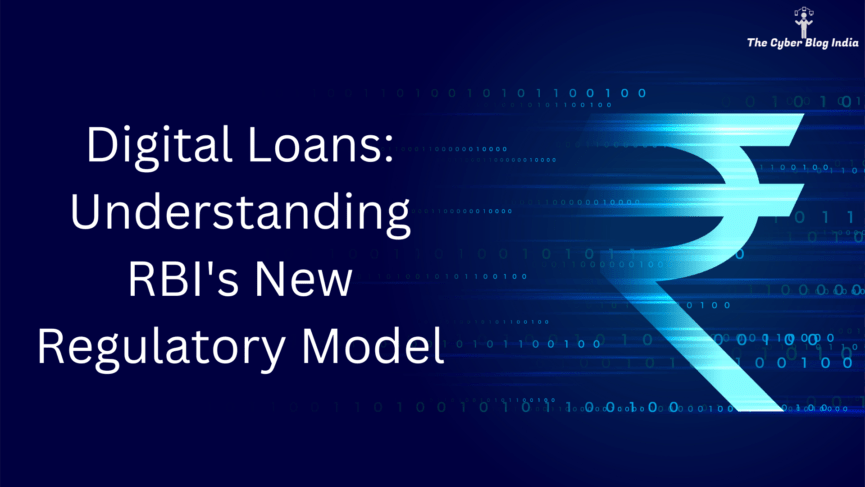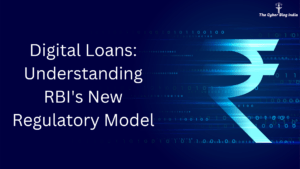Digital Loans: Understanding RBI’s New Regulatory Model


Digital Loans: Understanding RBI’s New Regulatory Model
Covid-19 changed how people use technology. Nearly 61% of households had access to the internet in 2021, compared to 17% in 2017. This massive adoption prompted companies to offer their services online to cater to a broader audience. Providing loans over the internet, or digital loans, has emerged as a leading service to get massive traction in the last couple of years.
What are Digital Loan Apps (DLAs)?
The Reserve Bank of India (RBI) defines digital lending as “an automated lending process backed with seamless digital technologies to assess credit, approve, disburse and recover loans along with accompanying customer service.” Therefore, digital loan apps are mobile or web-based platforms that facilitate the digital lending process. These platforms rely heavily on API-based communication to coordinate with multiple service providers and make their systems easily accessible to their customers. API (Application Programming Interface) allows communication between two or more apps to provide a service.
How are they different from banks?
Digital loan apps use contactless credit appraisal systems to assess the creditworthiness of an individual. “Creditworthiness” shows whether a borrower can repay the loan based on their average earnings. On the other hand, banks evaluate the same through assets, income, employment history, and credit score.
DLAs also consider other factors like potential future earnings and educational background, making it easier for people to procure a loan. Another difference can be the time taken to process a loan application. It can take weeks or even months for traditional banks, while digital loan providers quickly review loan apps and disburse the fund within a few hours or days.
Do we have any regulations for Digital Loan Apps?
While the digital lending market boom is apparent, more than 7,800 complaints have been registered against digital loan apps. There are two common themes across these complaints. First, breach of privacy and misuse of personal information. 6 out of 10 Indians have reported this concern as extended digital lending penetration leads to extensive transfer of sensitive personal information over the internet. Second, exorbitant fees and lending rates. Digital loan providers have been accused of charging 35%-45% of the loan amount as platform fees or platform charges.
In September 2022, the RBI issued “Guidelines on Digital Lending” for regulating digital lending apps in the country. It categorised digital loan providers into three types:
- Entities regulated by RBI
- Entities allowed to provide loans under any other statute but not regulated by RBI
- Entities outside the regulatory and statutory scope of RBI
Important highlights from the RBI Guideline
The guideline states that disbursals and repayments shall happen directly between the borrower’s bank account and the regulated entity. This process shall not pass through a lending service provider (LSP) or third party. Any fees charged by an LSP must be paid by the regulated entity, not the borrower. A lender cannot increase a borrower’s credit limit without their consent.
A regulated entity (RE) has to incorporate a cooling-off period during which a borrower can pay off their digital loans and proportionate costs without penalty. REs must provide a key fact statement (KFS) containing information such as interest rates, fees, discount points, agency fees, etc., to the borrowers at the time of the execution of a loan contract. Also, REs must report lending undertaken through their digital platforms to the Credit Information Bureau, irrespective of the nature and tenure of loans. Further, DLAs can only collect borrowers’ data on a “need basis” with explicit consent. A borrower has the right to accept or deny specific data usage and can also revoke their previously granted consent.
The guideline recommends setting up a Digital India Trust Agency to ensure that consumers use authorised and trusted DLAs for their loan requirements. Another recommendation is to set up a National Financial Crime Records Bureau to keep a check on digital loan apps.
Where does the ‘Buy Now, Pay Later’ model fit in?
While discussing the digital lending market, one cannot ignore the emergence of ‘Buy Now, Pay Later’ (“BNPL”) services in the market. It is a type of loan-advancing method that started around 2016 with the launch of Zest Money. According to Goldman Sachs, BNPL’s market share will create from 3% in 2020 to 9% in 2024. Moreover, India will be at the forefront of BNPL services.
BNPL is a short-time financing mechanism where a lender makes the payment on behalf of the user. This amount has to be repaid within a stipulated period. Unlike traditional loans, BNPL services do not charge interest on the principal amount. A user can pay back the entire amount or pay through no-cost EMIs. However, the lender can levy interest if they fail to make the payments within the stipulated time. Due to this reason, BNPL apps are becoming increasingly popular in India. For instance, LazyPay has 3.5 million active users, and the company has seen a three-fold growth in monthly disbursals amounting to ₹300 crores.
In its Payments Vision 2025 document, RBI has discussed BNPL and stated that it is exploring guidelines for regulating this sector. Meanwhile, the central bank has disallowed non-bank prepaid payment instruments (PPIs) from giving credit lines. As a result, users can only prefill their digital wallets with cash, debit, and credit cards. This leaves out the BNPL option to be used as a digital wallet. RBI’s stand is driven by the fact that the BNPL market is not adequately regulated, and many small ticket loans are not reported to the Credit Information Bureau.
Conclusion
With increasing internet access, businesses have a wider audience they can reach out to. The growth of DLAs and BNPL apps shows that users are receptive to internet-based services that simplify traditional processes. At the same time, proper regulation is necessary to ensure that the rights of borrowers are not exploited.
Author: Kartik Gill, undergraduate student at NLSIU, Bangalore
Featured Image Credits: Image by starline on Freepik
